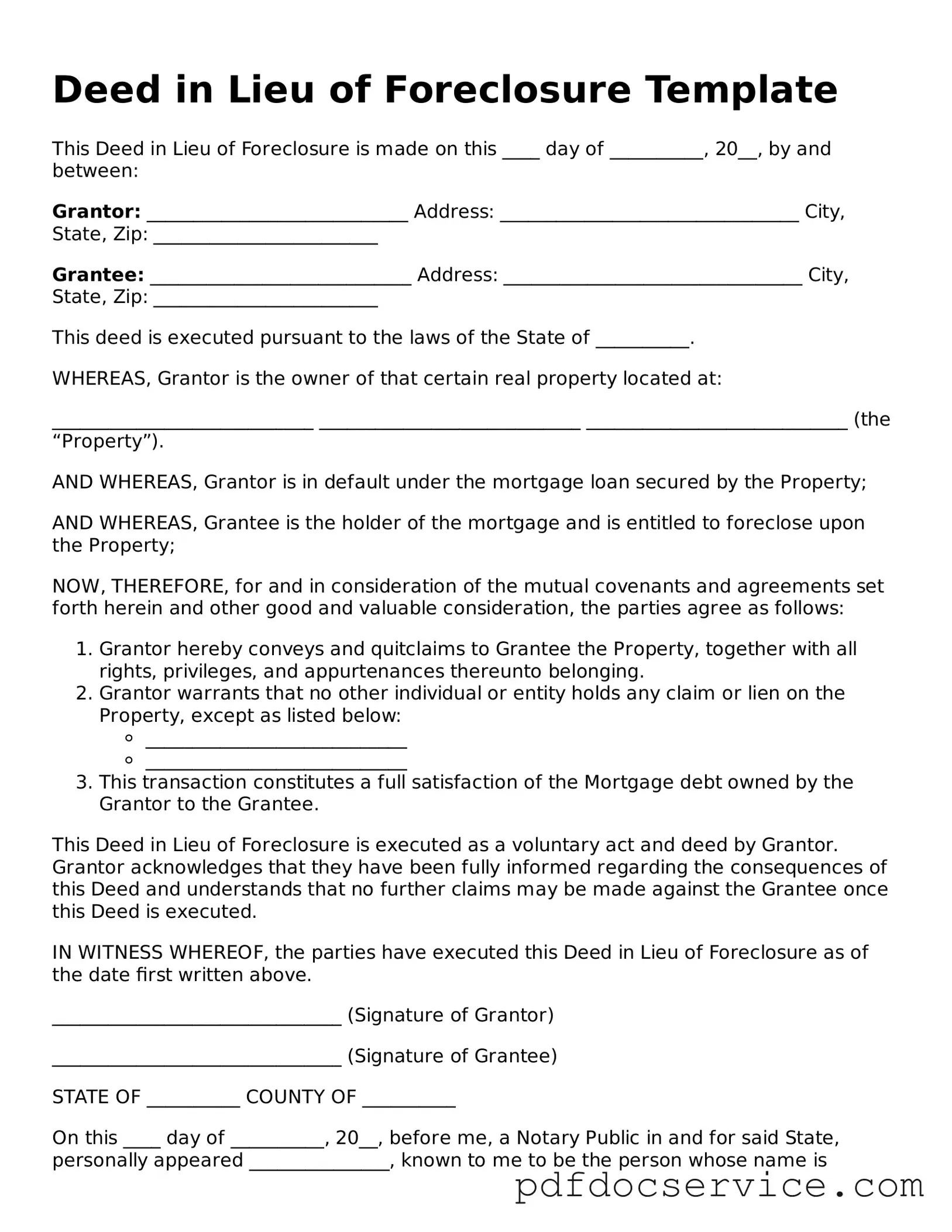Blank Deed in Lieu of Foreclosure Form
A Deed in Lieu of Foreclosure is a legal document that allows a homeowner to transfer the ownership of their property back to the lender, thereby avoiding the lengthy and often stressful foreclosure process. This option can provide relief for homeowners facing financial difficulties, as it can lead to a quicker resolution and potentially less damage to their credit. Understanding the implications and benefits of this form is crucial for anyone considering it as an alternative to foreclosure.
Open Deed in Lieu of Foreclosure Editor
